

A Complete Kenya Travel Guide
Home > A Complete Kenya Travel Guide
Top Destinations in Kenya
Just to name the popular tourist destinations in Kenya, this contains both bush and beach options. We have written at length about the attractions in these areas in the Parks & Reserves, and Attractions, under this section.
- Nairobi
- Maasai Mara
- Naivasha
- Elementaita
- Lake Nakuru
- Bogoria
- Nanyuki
- Samburu
- Aberdare National Park
- Mt. Kenya National Park
- Amboseli National Park
- Tsavo National Park
- Mombasa
- Diani
- Watamu
- Malindi
- Kilifi
- Lamu
Kenyan Parks, Reserves and Sanctuaries
The home to the Big Five, namely Elephant, Lion, Leopard, Rhino and Cape Buffalo, Kenya is endowed with numerous national parks, marine parks and game reserves that host a large variety of wild animals. Most of the safari wild animals on an adventurer’s wish list can be found in Kenya. It is the world’s capital boasting more than 50% of the globe’s wildlife families. So, let’s take a look at some of these high-density parks and reserves.
A Comprehensive List of Popular Attractions in Kenya
Safari/Wildlife Viewing
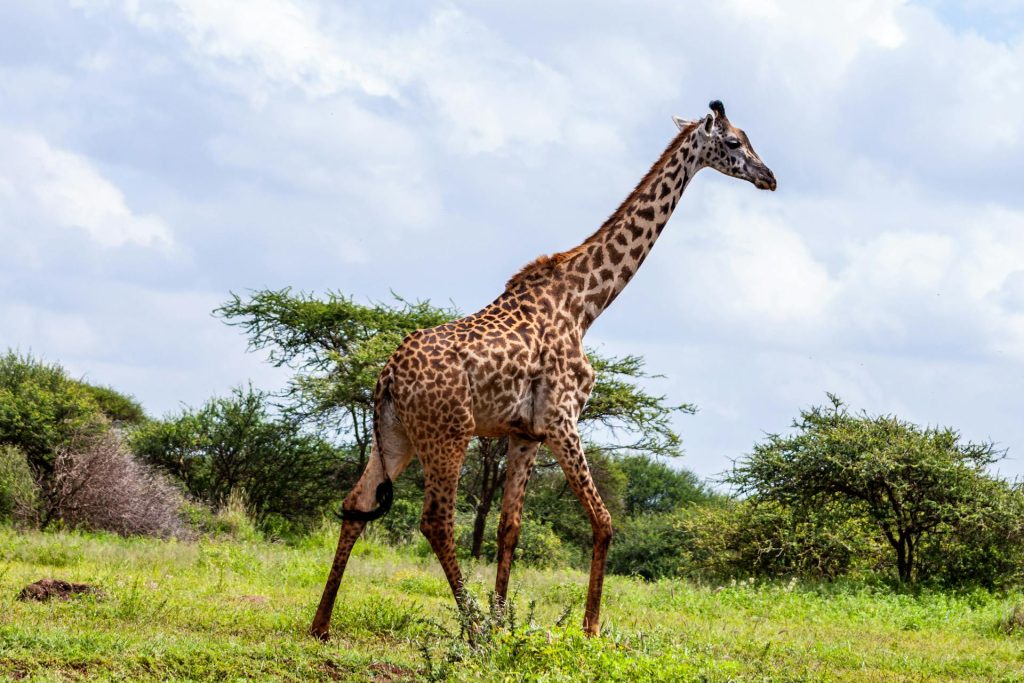
- Nairobi National Park
- Giraffe Centre
- David Sheldrick Trust
- Tsavo Park
- Amboseli National Park
- Aberdare Park
- Bogoria Hot Springs and geysers (flamingos and breathtaking scenery)
- Crater Lake Game Sanctuary, Naivasha
- Crescent Island, Naivasha
- Lake Oloiden, Naivasha
- Buffalo Springs National Reserve, Laikipia County
- Marsabit National Park, Marsabit County
- Lake Turkana
Culture & Heritage
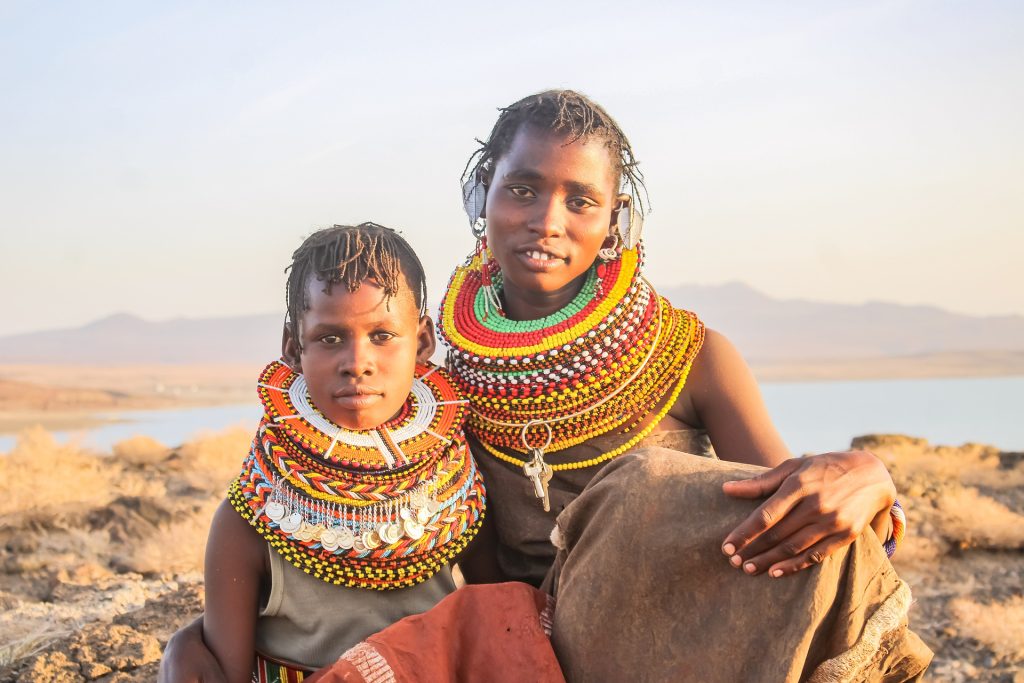
- National Archives
- Bomas of Kenya
- Kazuri Beads and Pottery Centre
- Nairobi National Museum (& Snake Park)
- Karen Blixen Museum
- Bomas of Kenya
- Red Hill Art Gallery
- Matt Bronze Gallery
- Taita Hills Sanctuary, Saltlick Lodge (Taita Hills WW1 Museum)
- Shetani Caves
- Vasco da Gama Pillar
- Fort Jesus
- Shimoni Slave Caves
- Kaya Kinondo
- Gede Ruins
Coastal Adventures
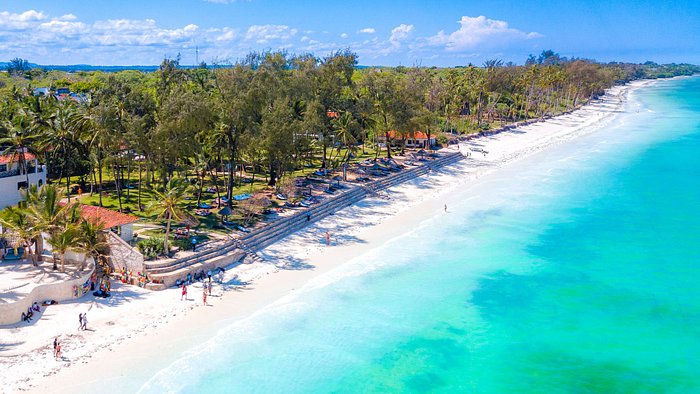
- Haller Park
- Old Town Mombasa/Spice Market
- Mombasa Marine Park
- The coast of Diani
- Kilifi Creek
- Mzima Springs
- Kisite Mpunguti Marine Park
- Malindi Pier
- Mamba Village Crocodile Farm
- Ndoro Sculpture Garden
- Malindi Marine Park
- Watamu Marine Park
- Mida Creek
Conservation
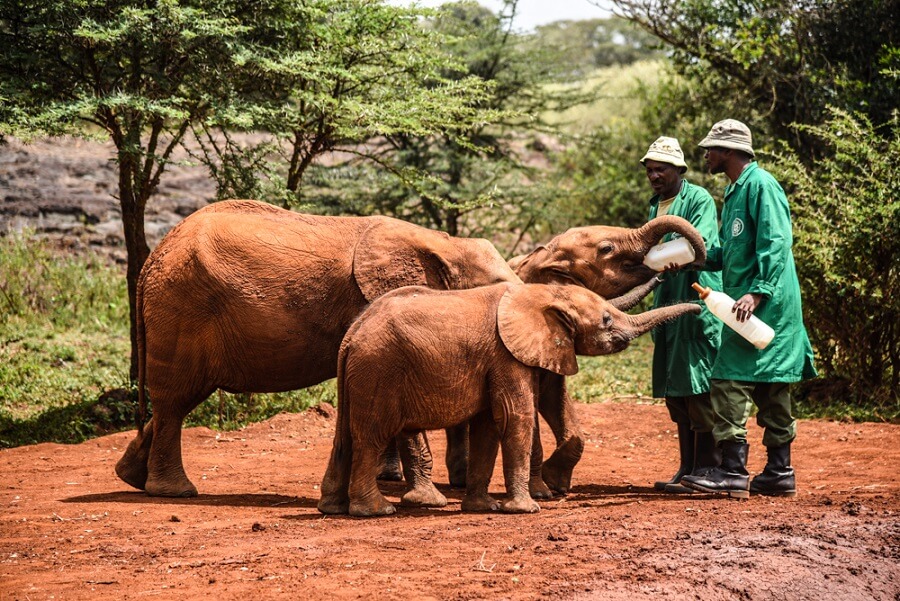
- The David Sheldrick Trust
- Kitengela Hot Glass
- Reteti Elephant Sanctuary
- Colobus Conservation, Diani
- Ol Pejeta Conservancy
- Lewa Wildlife Conservancy
- Bio Ken Snake Park
- Kipepeo Butterfly Farm
- Falconry of Kenya Ltd
Tea/Coffee/Cheese Factories
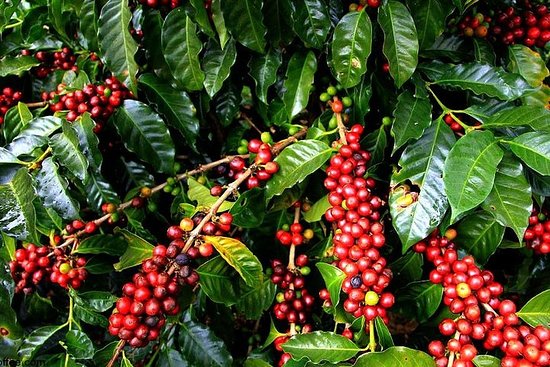
- Kiambethu Tea Farm
- Nairobi Coffee Farm and Factory Tour
- Brown’s Cheese Tour
Hikes/Forests & Adventure
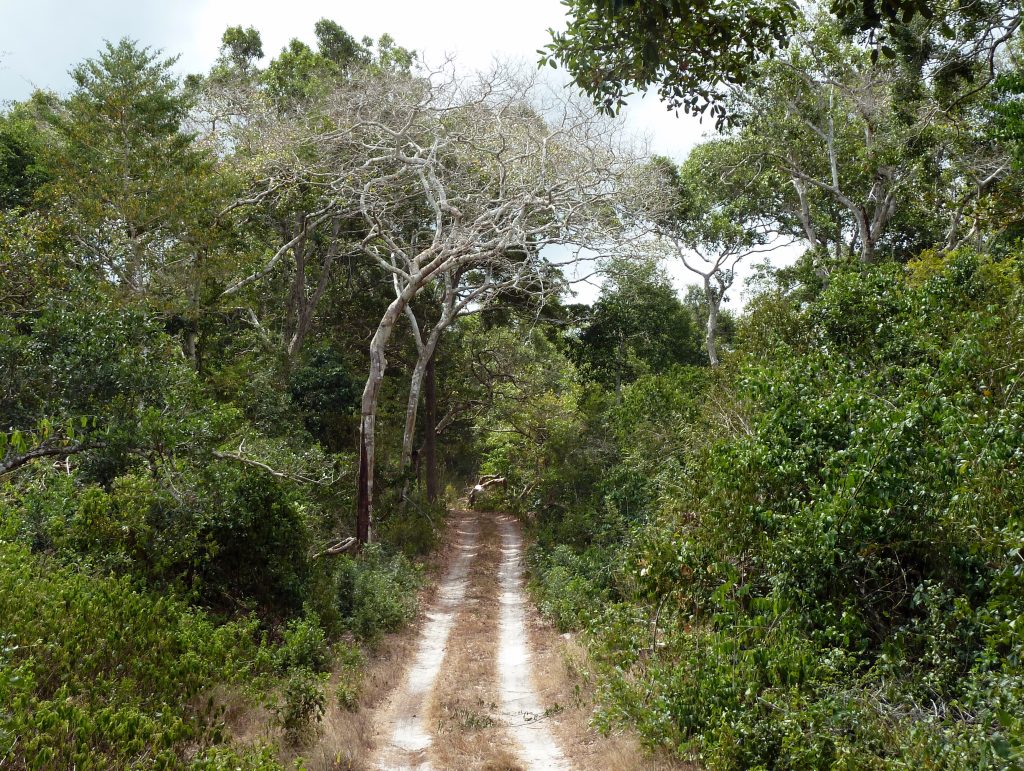
- Ngong Forest
- Mt Longonot
- Hell’s Gate National Park
- Arabuko Sokoke Forest
- Kakamega Forest
- Menengai Crater
- Thompson’s Falls
- Kaya Kinondo
Must do Experiences
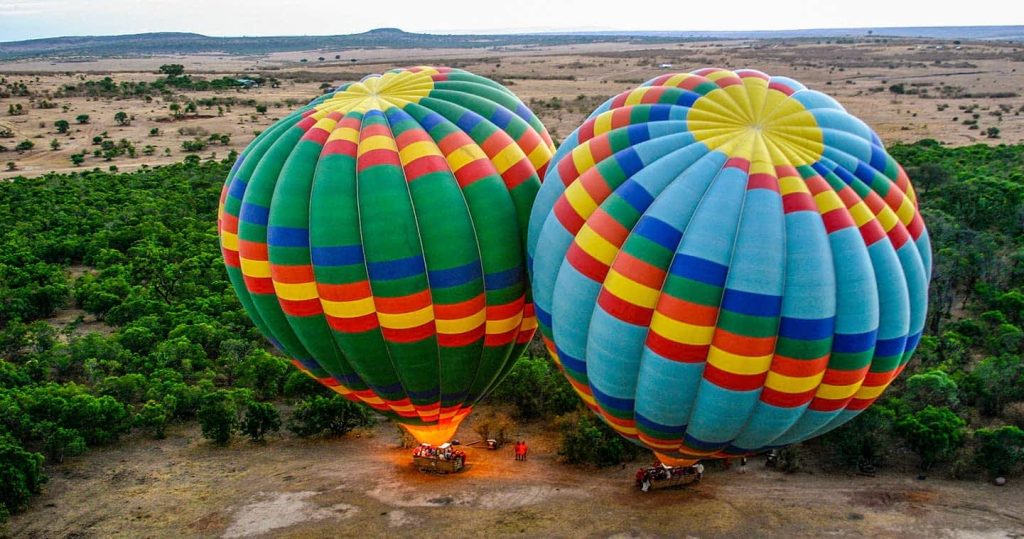
- Experience Kenyan food
- Kitesurfing in Diani and Lake Turkana
- Ziplining at Kereita
- Scuba diving & Snorkelling in Diani
- Mountain climbing in Mount Kenya
- Trout fishing in Mount Kenya
- Hot Air Balloon Safari in Maasai Mara
- Mountain Biking at Hells Gate National Park
- Walking safari in Crescent Island, Naivasha
- A visit to see baby elephants at the David Sheldrick Trust
- Giraffe feeding at Giraffe Centre
- Dine at Ali Barbour Cave
- Dolphin watching at Kisite Mpunguti Park
- See the Great Migration in Maasai Mara
- Enjoy a meaty meal at Carnivore Restaurant, Nairobi
- See the Big Five in the national parks
- Birdlife watching at Lake Elementaita and Lake Naivasha, Nakuru County
- Sail on a Dhow in the Indian ocean
- Experience Camel/Horse Riding Safaris
- Experience Kenyan culture especially the Samburu and the Maasai
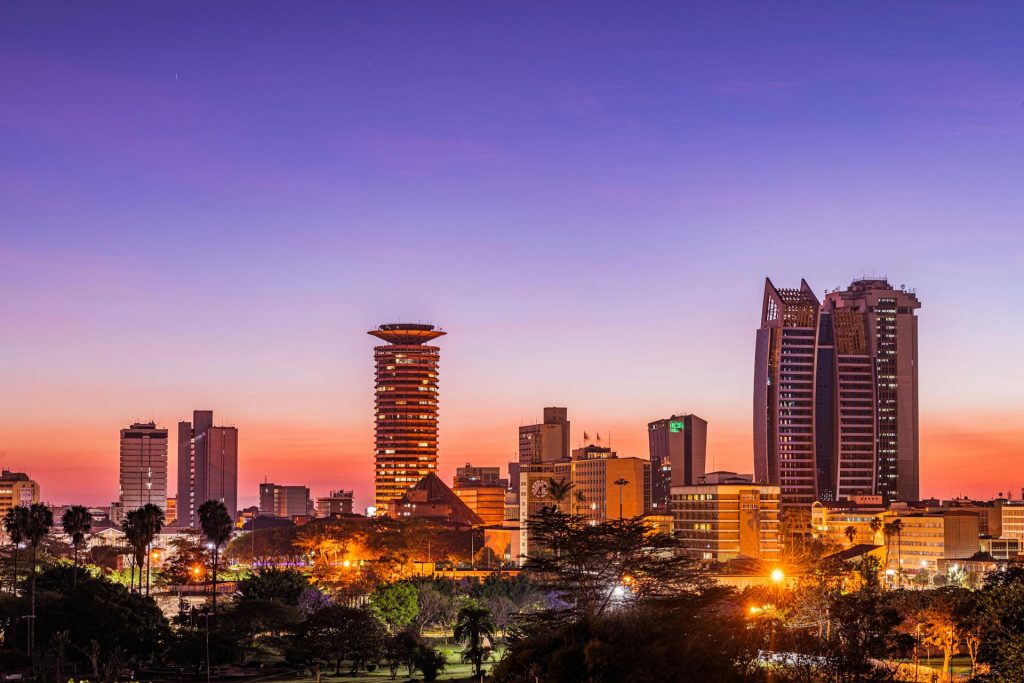
Facts About Kenya
Top Facts:
Name: Republic of Kenya
Languages: English as the Official Language and Swahili as the National Language
Population: Approximately 54 million people
Capital city: Nairobi
Other cities: Mombasa, Kisumu, Eldoret and Nakuru
Currency: Kenyan shilling
Independence or Jamhuri Day: 12 December
Kenya encompasses savannah, lakelands, the dramatic Great Rift Valley and mountain highlands. It’s also home to wildlife like lions, elephants and rhinos. From Nairobi, the capital, safaris visit the Maasai Mara Reserve, known for its annual wildebeest migrations, and Amboseli National Park, offering views of Tanzania’s 5,895m Mt. Kilimanjaro.
There are Over 43 tribes in Kenya
There are 43 tribes in Kenya that majorly belong to three broad language families: Niger-Congo (Bantu branch) and Nilo-Saharan (Nilotic branch), spoken by the country’s Bantu, Nilotic populations and the Cushitic, Afroasiatic language family respectively. The Arab ethnic minority speak languages belonging to the separate Afroasiatic family, with the Hindustani and British residents speaking languages from the Indo-European family.
The capital city of Kenya is Nairobi. It is the most populous city in East Africa, with a current estimated population of about 3.5 million. This makes it the 14th largest city in Africa. Being Kenya’s capital, and the arrival point for many visitors, it is well served by leading international airlines, and regional road networks linking it to other major East African urban Centres.
Nairobi is the Capital City of Kenya
Nairobi City boasts of many exciting tourist attractions and experiences in Africa. Recently, it was ranked the best city to visit in 2024 by Lonely planet. Nairobi is the safari capital of the world. It is the only Capital city with a national park within its boundaries. The city is home to many leading tour operators and travel agencies which can help you book your dream trip anytime.
It also has a rich culture being a historical city, which makes it desirable as a tourist destination. In addition, it’s a melting pot for many Kenyan cultures and is the home of many architectural landmarks.
Nairobi is also a commercial hub for Eastern and Central Africa, major airlines with a global network operate into and out of Jomo Kenyatta International Airport which is the gateway to the entire region. This is because Nairobi has one of the best connection distributions in Africa thus making it very accessible, in close proximity and with great connectivity to the rest of the world.
Nairobi is a city full of contrasts. It’s old enough that you can feel its past and multi-ethnic enough for you to experience its rich Kenyan culture.
A visit to Nairobi provides an opportunity for visitors to enjoy rich culture and heritage, amazing wildlife, buzzling nightlife, delectable and tantalizing cuisines, unforgettable adventure and participate in meetings, incentives, conferences and exhibitions. A tour of Nairobi will normally include visits to the Nairobi National Park, Nairobi Safari Walk, Giraffe Centre, David Sheldrick Wildlife Trust, Karura forest, Mamba Village, Bomas of Kenya, Nairobi National Museum, Nairobi Snake Park and Botanic garden, Karen Blixen Museum, Railway Museum, Nairobi Gallery, Kenya National Archives, Nairobi Arboretum, Oloolua Nature trail, Uhuru Park, Central Park, Uhuru Gardens, Michuki Park, City Park, Kazuri Beads, Godown Arts Centre, historical monuments and buildings among others.
There are over 60 National Parks, Reserves, Marine Reserves and Sanctuaries in Kenya
Did you know there are over 50 national parks and reserves in Kenya? That’s right, 22 national parks and 28 national reserves are managed and maintained by the Kenya Wildlife Service, ensuring that the native wildlife of this land is protected against hunters and poachers.
On top of the 22 national parks and 28 national reserves, Kenya is also home to 4 national wildlife sanctuaries, 4 marine parks and 6 marine reserves.
Discover the Great Rift Valley in Kenya
The Great Rift Valley is part of an intra-continental ridge system that runs through Kenya from north to south. It is part of the Gregory Rift, the eastern branch of the East African Rift, which starts in Tanzania to the south and continues northward into Ethiopia. It was formed more than 25 million years ago by geological tension in the earth’s crust and is approximately 6500 kilometres long and 60 kilometres wide.
The Great Rift valley is another prized Kenyan attraction, boasting beautiful lakes and escarpments, which provide havens for plentiful wildlife. The region is a birdwatcher’s paradise, as it attracts a number of species to its sparkling lake shores – most notably huge flocks of flamingos that happily wade near hippos and other game species.
Four exceptional bodies of water, Lake Naivasha (the highest of the Rift Valley lakes), Lake Nakuru (renowned for its pelican colony), Lake Elementaita (with over 400 bird species) and Lake Bogoria are the most well-known. Lake Turkana, Lake Baringo, Lake Magadi, Lake Kamnarok, and Lake Logipi are part of this exceptional lake system.
Travellers visiting the region will be treated to exceptional sightings of leopard, white rhino, Rothschild’s giraffe, an assortment of plains game, and excellent birdlife. Flamingos fly seasonally across the saline lakes in this area and can be found in huge numbers moving from one lake to the other. These lakes also provide the main nesting and breeding grounds for Great White Pelicans in the Great Rift Valley.
Run like a Kenyan
Kenya is synonymous with running marathons. Kenyans, mostly from the Kalenjin community, have dominated marathons for decades, dashing across finish lines as their exhausted competitors barely made it. In the process, they’ve toppled their own records or those of their fellow citizens.
Most of the Kenyan runners who dominate marathons worldwide train and live in the high-altitude Rift Valley. Iten, one of the towns that produces elite runners, sits nearly 8,000 feet above sea level in western Kenya. Training at high altitudes contributes to a running dominance that makes running at lower elevation child’s play.
There is a widespread belief in the athletic community that altitude training can enhance sea level athletic performance, with at least three independent studies demonstrating that altitude training increases both sea level maximal oxygen consumption and running performance.
Kenya's national bird is the Lilac Breasted roller and its flower is the orchid
Lions are one of the most charismatic species on earth, idolised across the world as a symbol of courage and strength. Not only do they play a big part in ecosystem health, but they are also a major contributor to Kenya’s GDP. It’s no wonder that the lion is Kenya’s national animal.
The lilac-breasted roller is Kenya’s national bird because of the wide array of colours on its feather coat. In total, it has around 8 colours: green, white, black, yellow, turquoise, dark blue, reddish-brown, and lilac. The colours are supposed to represent the many different tribes that make up Kenya’s community. It is a beautiful reference to the rich diversity that exists within Kenya.
The national flower for Kenya is the lovely orchid. On the tropical coastline, they flourish in the steamy humid climate. Our orchids tend to be best in a hot or temperate climate, which covers the vast majority of Kenya.
Kenya is the world's leading Safari Destination
Being home to the Masai Mara National Reserve, and being right on the border of Tanzania’s Serengeti park, it’s no wonder that Kenya is amongst one of the world’s leading safari destinations. In fact, this title is so undisputed, that Kenya was officially recognised as such by the World Travel Awards in 2015, and it has maintained that title since.
A Kenya safari highlights the country’s dramatic landscapes, which include a range of national parks and reserves, refuge to the “Big Five” (elephant, lion, leopard, rhinoceros, and buffalo.)
Humanity Started in Kenya
Kenya is recognized by paleontologists globally as a hotbed of archaeological discoveries contributing to the story of human evolution. In fact, Kenya has produced fossil evidence which tells almost the entire human evolutionary story. The National Museums of Kenya holds more than 350,000 fossils in its collection, about 700 of which belong to ancient humans. This exhibit is an appreciation of some of the major human fossil discoveries made in Kenya. Koobi Fora is an important archaeological site where Dr. Richard Leakey made his first discovery of a 2-million-year-old fossil.
Africa’s oldest human remains were found in the Tugen Hills in Kenya, and go back 7 million years. Kenya has some of the world’s most complete skeletons including the Turkana Boy (1.6 million years old) which has provided great knowledge of early human physiology. Kenya has about 20 Miocene sites while Ethiopia has two. The Miocene is the first geological epoch of the Neogene Period, 23 million to 2.6 million years ago.
The Great Migration
Know the saying ‘the grass is always greener on the other side’? Well, during the great migration, the grass is indeed greener on the other side. Each year, over two million wildebeest, zebra and other herbivores trek from the southern Serengeti to the lush green grasses of the Masai Mara. Known as one of the seven wonders of the world, the great migration is an iconic safari must-see.
The constant year-long migration is an iconic natural phenomenon, the timing of which depends on environmental factors, the weather and of course, the animals themselves. In short, the biggest mammal trek in the world follows the rains. The herds travel 800 kilometers clockwise in a circle through the Serengeti and Masai Mara ecosystems in search of greener, mineral rich pastures and water. The animals spend most of the cycle in the Serengeti in Tanzania, but also spend several months trekking the bountiful plains of the Masai Mara.
In general, the best time to see the Great Migration in the Masai Mara is from July to October. Keep in mind though, mother nature is her own boss. We will provide you with a very probable outline of when to expect those special moments during the Great Migration, but obviously there is no way to know for certain that the herds will cross a river during a particular period of time. Weather can be unpredictable and late rains or early rains can result in a delayed or early migration pattern. The good news is that the Masai Mara has plenty of wildlife to enjoy all year round. The months that are most frequently mentioned as the best time of year to visit the Great Migration, July to October, are also the busiest months in the Masai Mara. It is safe to say that you won’t have the herds to yourself during these months. You can expect more safari travelers within the Masai Mara National Reserve proper and may have to queue up during safari game drives. For a quieter stay in this period we recommend staying in one of the Masai Mara conservancies.
Frequently Asked Questions
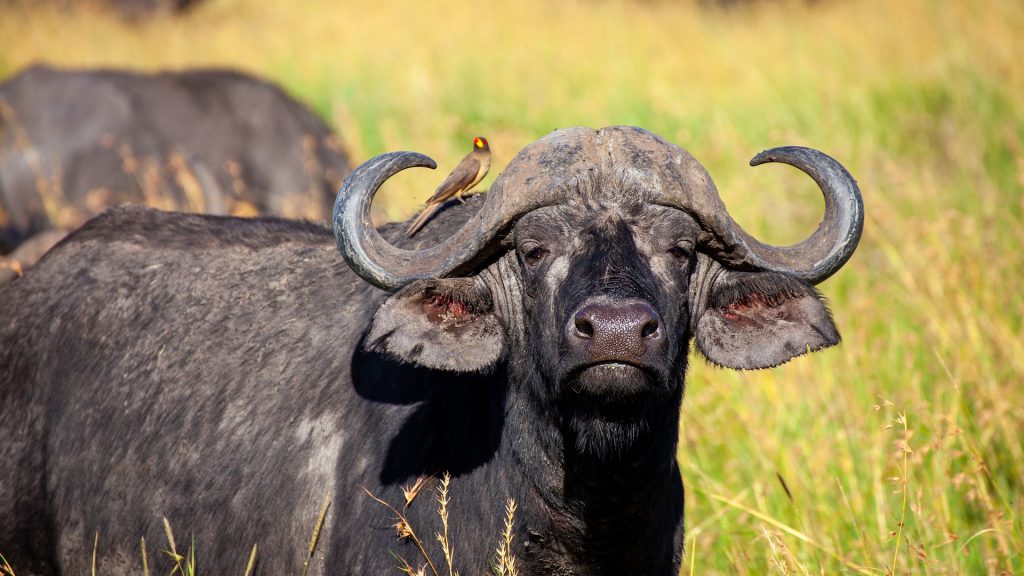
What health precautions do I need to observe while on or before taking a safari to your Kenyan Parks and Reserves?
Visitors to the country require vaccination against cholera and yellow fever. Other vaccinations recommended are against typhoid, tetanus, and hepatitis. Some vaccinations may need a course of injections, allowing sufficient time for this. As a precaution against Malaria, prophylactics should be taken before, during and after a visit to Kenya. Prevention consists of using effective protection against bites such as insect repellent and mosquito nets.
Other than taking obvious precautions, a visit to the park should present very limited health hazards.
What do I need to bring along for a safari to Kenyan Parks and Reserves?
Visitors to the wide network of parks and reserves in Kenya will experience a wide range of Climatic Conditions. These will depend on the time/seasons of visit. Clothes to bring along should therefore be adaptable. However, many of the parks are located in low altitude areas and have temperatures ranging from warm to hot in the day and cool to cold in the night. Take outfits that layer so that you start well rugged and can “peel off” as the day warms up. Basic clothing include, loose fitting long trousers and shirt/ T-shirts, a hat and sunglasses against the sun, lace up shoes. Clothing should be natural, earthly colored or Khaki. Locally made safari outfits are available in a number of shops.
You will also find a bird guide, mammals guide and a map of the country quite handy. These can be purchased from our gift shops.
Other essential things to include in your safari bag include a torch, insect repellant, binoculars and plenty of camera film. It is advisable to travel with a small medical kit that includes any basic remedies you may need, such as antacids, painkillers, anti-histamines and cold remedies.
Can you recommend a reliable/reputable tour operator for a Kenyan safari?
Many reputable small and large tour operator firms organize safaris in KWS Parks and Reserves. They offer expert driver guides, information, and wildlife viewing trips into the parks. Tour operators are managed by their umbrella organization, Kenya Association of Tour Operators KATO, to ensure that they operate to the very high standards of professionalism. For wildlife viewing safari or a specialist safari to the Parks and Reserves kindly contact any of the tour operators listed on www.katokenya.org.
Can I pay my Park entrance fees in advance, what mode of payments should I use?
If you are visiting the parks on a package tour, your tour operator will include park entry fees in the total cost of your safari. However, if you are visiting on a self-organized tour, you do not need to pre-pay your park entrance fees, Park entrance fees, camping fees and self-catering accommodation fees are paid on arrival at the park gate.
In the five major Parks, Aberdares, Tsavo East, Tsavo West, Nairobi and Amboseli National Parks, entrance is by Smartcard. While other parks require the paper tickets.
How much does a safari to Kenya cost?
The cost of a safari varies depending on the kind of safari (luxury or budget) and on the length of itinerary you wish to undertake. Generally, a safari could cost between US$70 to US$400 per person per night for Park entrance fees and other services offered such as meals, accommodation and game drives.
When is the best time to visit Kenyan Parks and Reserves?
Kenya experiences varied weather conditions in the year. Most of the Parks and Reserves with the exemption of mountain and forest parks are located in areas that predominantly experience dry, warm to hot conditions.
Generally, the climate is warm and humid at the coast, cool and humid in the central highlands, and hot and dry in the north and east. These climatic variations are due to differences in topography across the country.
Our Parks and Reserves offer year-round attractions and activities to suite your interest and schedule. However, there are two distinct tourist seasons, which generally correspond to local climatic conditions;
High season: – July-December and December to March, these are the best months to visit our parks for wildlife viewing and other activities. (Easy wildlife viewing because of short grasses in the parks, plenty of food for wildlife, good sunny climate)
Low Season: April-June. Long rains are experienced during this time. Most Park roads may require use of four-wheel drive vehicles.
Source: Kenya Wildlife Service